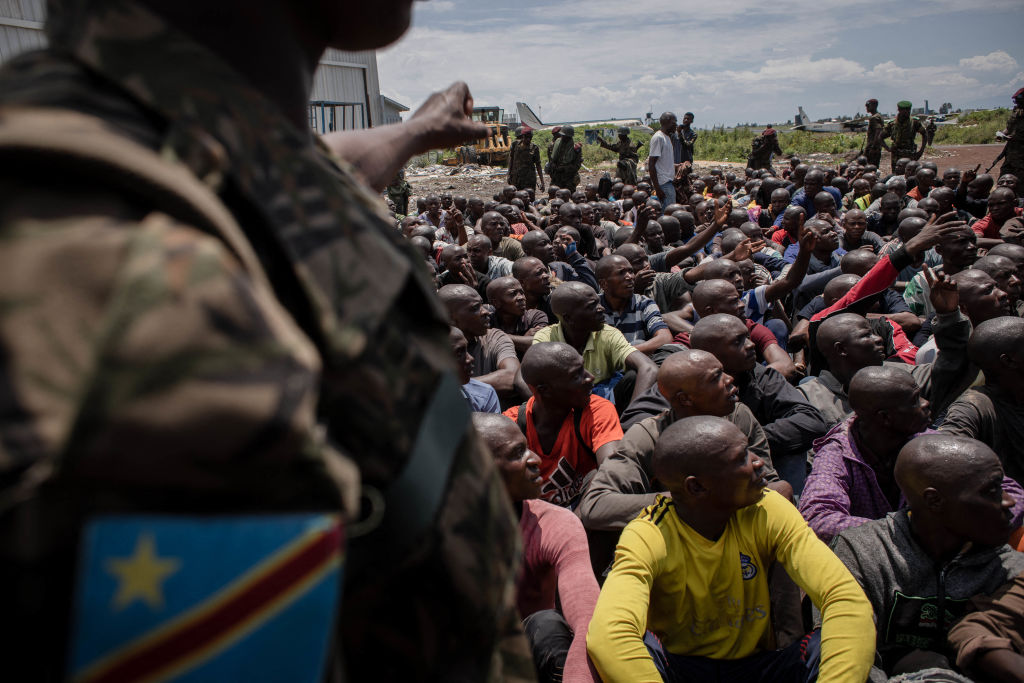ADF STAFF
In the eastern region of the Democratic Republic of the Congo (DRC), the word “Wazalendo” has become nearly as ubiquitous as the sight of armed men in fatigues.
They are local militiamen who have partnered with the Congolese military (FARDC), primarily to fight the M23 rebels who have terrorized North Kivu province for nearly two years.
Fighting has intensified since October 2023, and the growing number of combatants has heralded a dangerous new phase.
“Before, we too were called rebels. Today, they call us Wazalendo and we don’t hide anymore,” a member of the Mazembe Mayi-Mayi self-defense group told French newspaper Le Monde.
The region has been tormented by multilayered conflict that has lingered for nearly three decades, claimed an estimated 6 million lives and forced nearly 7 million Congolese to flee their homes — one of the world’s largest internal displacement crises.
Eastern DRC is home to more than 120 armed groups, but many local-level militias have joined forces with the military, according to the United Nations Group of Experts on the DRC.
“In the context of the struggle to ‘liberate’ territories from the grip of ‘foreign’ armed groups, such as M23, Congolese armed groups adopted the Wazalendo or ‘true patriots’ banner to gain legitimacy and better position themselves for possible future integration within FARDC,” the experts wrote in a December 2023 midterm report.
In November 2022, Congolese President Félix Tshisekedi issued a call for young men and women to organize “vigilance groups” and support FARDC against M23. The military says it has trained 40,000 Wazalendo recruits since Tshisekedi’s rallying cry.
“It has become an expression that everyone borrows,” Christian Badose, a political candidate in North Kivu, told Le Monde. “The authorities have taken the Wazalendo doctrine and turned it into a populist discourse.”
On September 3, 2023, a DRC government decree legalized the presence of militias within FARDC, bringing together a coalition to fight M23 that also included the Burundi National Defence Force and the Forces démocratiques de libération du Rwanda (FDLR), a mainly Hutu rebel group linked to the 1994 Rwandan genocide.
FARDC denies working with FDLR, but the U.N. experts’ report detailed the battle lines in mid-December: “Heavy fighting resumed between M23, supported by the Rwandan Defence Force, and FARDC supported by the [Wazalendo], FDLR, private military companies and Burundian troops.
“Civilians belonging to all communities found themselves in the crosshairs of the different parties to the conflict, exposed to retaliation and forced to flee. Indiscriminate shelling, kidnappings and targeted assassinations were committed by both sides.”
The experts’ report also confirmed collaboration between M23 and the Twirwaneho, a South Kivu-based armed group formed to defend Congolese Tutsis.
The increasingly complex fighting in eastern DRC includes several other active armed groups: CODECO and Zaire, who oppose each other in Ituri province; Nyatura, which is aligned with FDLR in North Kivu; and the Islamic State group-backed Allied Democratic Forces, which recently has intensified attacks in Uganda.
FARDC’s primary focus is M23. A New York Times article in December cited FARDC sources who confirmed the presence of 1,000 Romanian mercenaries who have been protecting North Kivu’s capital, Goma, since it was surrounded by M23 fighters.
The sources also claimed that FARDC launched a drone strike that hit Rwandan Soldiers near Goma in mid-December.
Experts say the DRC government is taking a risk in using militias as part of its military-only approach to solving the M23 problem.
“The more [DRC] throws their army and Wazalendo, the more pushback and costs borne by civilians and ordinary people,” Richard Moncrieff of the Crisis Group told Al-Jazeera. “Kinshasa needs to work out another more realistic strategy.”
David Egesa, a security analyst based in Uganda’s capital, Kampala, warned that arming Wazalendo could have short-term benefits but also could strengthen militia groups.
“DR Congo might discreetly allow the militia to work together against M23, but such a twisted game could, in the longer term, embolden the militias,” he told Anadolu Agency. “It’s a dangerous situation.”

